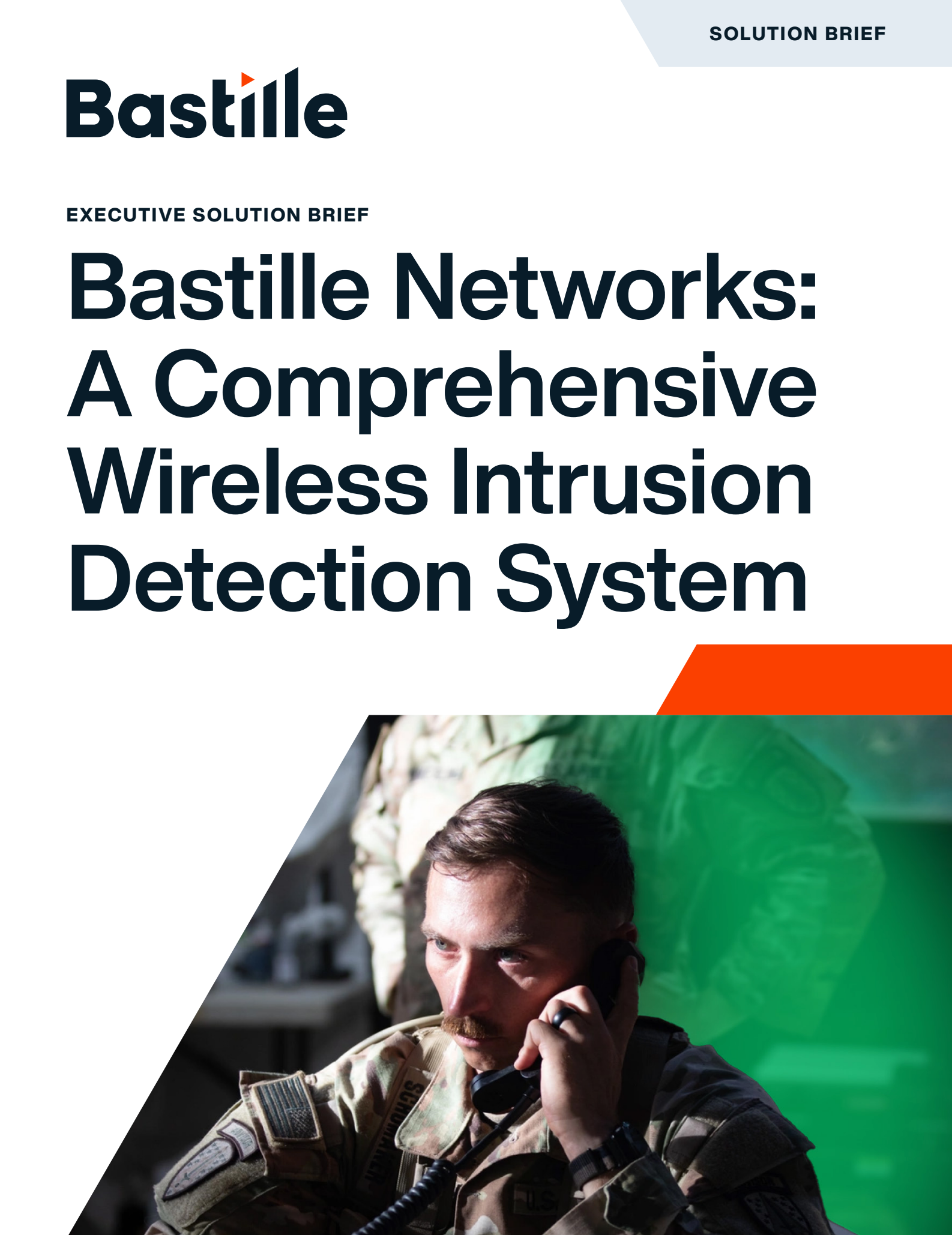
Download Now
As wireless technologies proliferate across enterprise environments, the attack surface expands exponentially. Organizations are increasingly relying on Wi-Fi, Bluetooth, cellular, and IoT protocols, each of which introduces unique vulnerabilities and operational risks.
Bastille Networks addresses these challenges with a 100% passive, full-spectrum Wireless Intrusion Detection System (WIDS) that delivers real-time monitoring, detection, investigation, and response capabilities. By covering the 100 MHz to 7.125 GHz spectrum, Bastille provides unparalleled visibility into the frequencies commonly used within enterprise environments, enabling organizations to proactively manage and mitigate wireless threats, strengthen their compliance frameworks, and support proactive threat-hunting initiatives.
Challenges in the Wireless Threat Landscape
Wireless technologies offer convenience and productivity, but they also introduce significant security challenges. Attackers exploit the fact that radio frequency (RF) communications extend beyond physical perimeters, making wireless attacks difficult to detect and attribute. Traditional security measures, focused on wired networks and perimeter defenses, are inadequate for detecting or responding to threats in the RF spectrum. Enterprises require a new class of security solutions that can defend against wireless-borne threats in increasingly complex environments.
The Need for WIDS
A WIDS monitors radio frequencies for unauthorized or anomalous activity, providing early detection and mitigation of threats. Unlike conventional network security tools, a WIDS delivers comprehensive coverage of all wireless communications, offering critical visibility into activities that extend beyond the wired environment. A robust WIDS should operate in a passive, continuous manner, minimize false positives, provide device-level attribution, and integrate with broader security operations.
Challenges in the Wireless Threat Landscape
Modern enterprises encounter several challenges:
- Wi-Fi Vulnerabilities: Organizations are susceptible to various threats, including rogue access points, Evil Twin attacks, MAC spoofing, interception of unencrypted data transmission, and protocol-level exploits such as KRACK. Devices connecting to unsanctioned Wi-Fi networks may expose corporate credentials and sensitive data.
- Bluetooth Exploits: Bluetooth connections often come configured with minimal security controls. Attacks such as BlueBorne or KNOB exploit protocol flaws to spread malware or gain access to a device’s data and communication channels.
- Cellular Risks: Mobile phones and hotspots can act as covert data connections that bypass existing security controls. This capability is particularly dangerous in secure facilities where mobile phones are restricted and in manufacturing environments where cellular interference can disrupt critical operations.
- IoT Device Proliferation: Many IoT devices lack fundamental security protections and use obscure wireless protocols. These devices often bypass traditional network security controls, creating blind spots and backdoors that can compromise the enterprise network.


